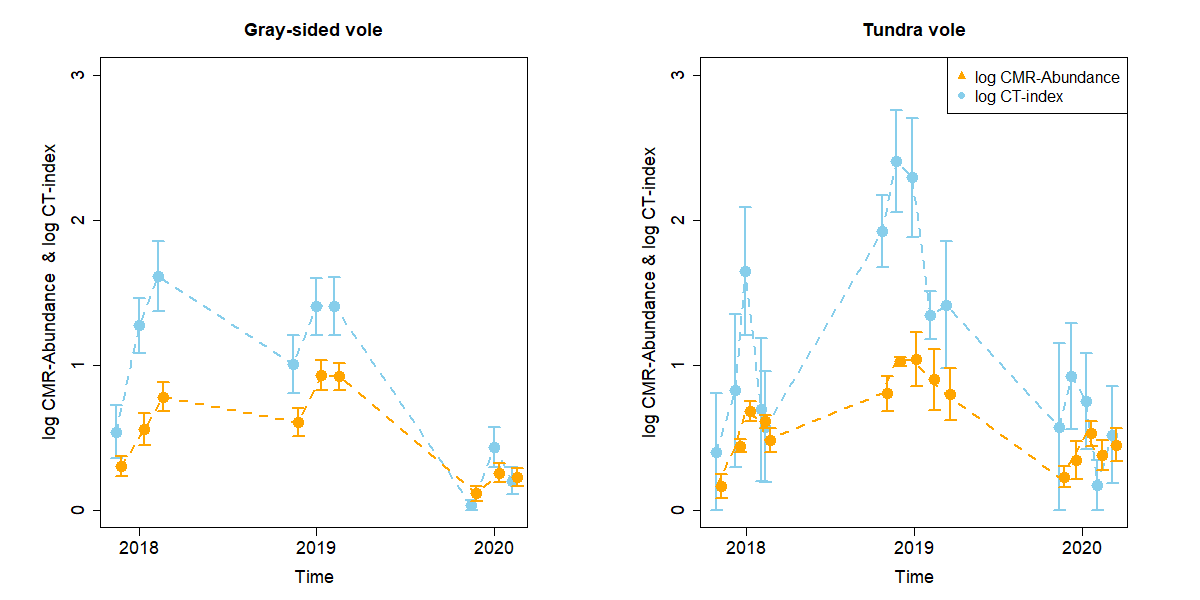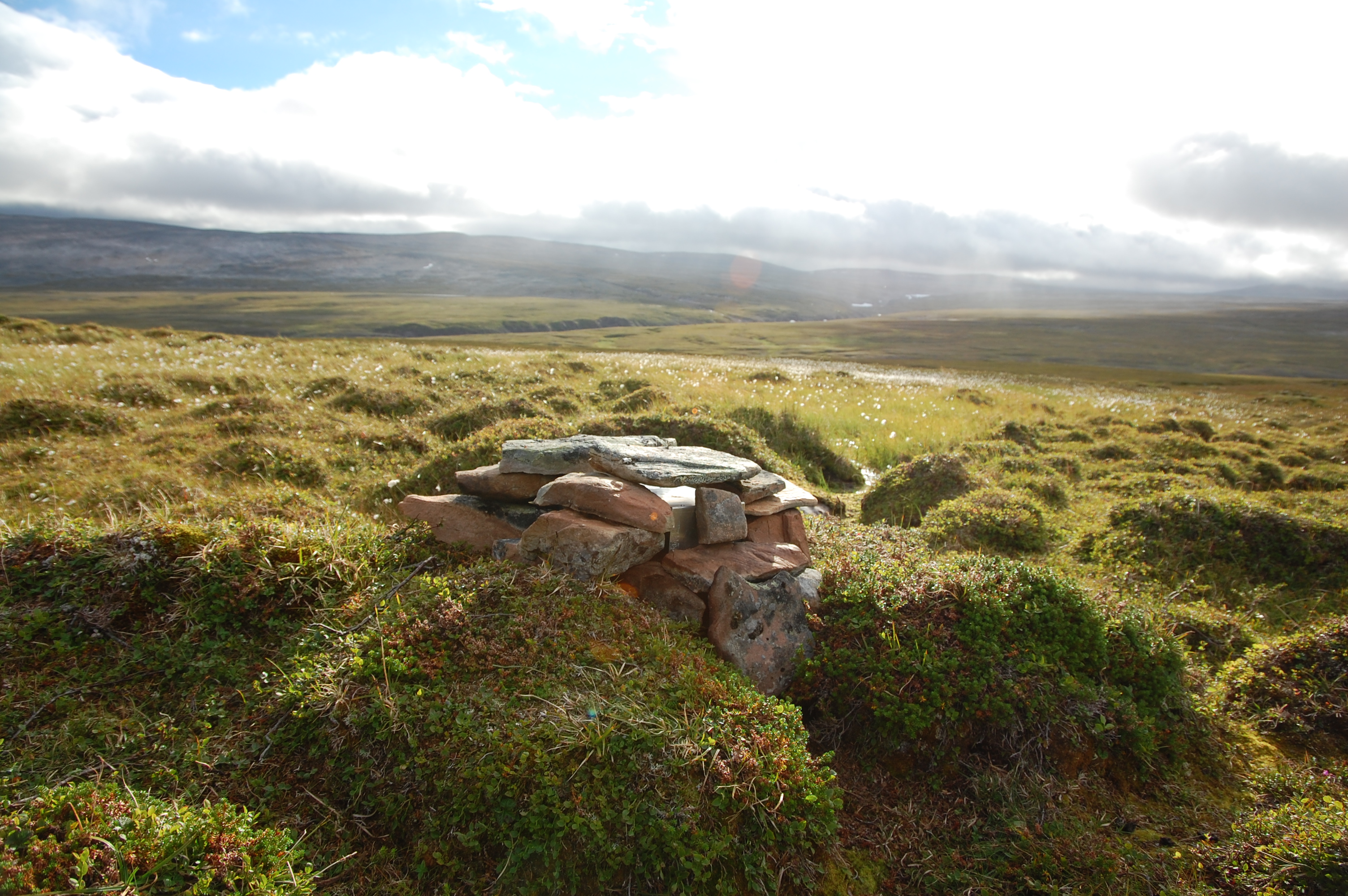Small rodents are crucial to the functioning of the tundra food-web because of their spectacular population cycles which gives the predators waste amounts of food in the peak years and cause a huge grazing pressure on the food-plants. Despite their importance much are still unknown about small rodents and their food-web interactions.
Grey-sided vole photographed during live-trapping. Photo: Rolf A. Ims
One of the reasons to this is that they are difficult to monitor on the temporal and spatial scales needed by the use of conventional methods. In this publication we test how a customer made camera trap, developed by COAT, can be used to estimate the abundance of the two most important vole species on the Norwegian tundra (grey-sided vole and tundra vole).

Batteries and memory cards are changed once a year. Photo: Leif Einar Støvern
We deployed camera traps in the same grids as we also conduct live-trapping of rodents. Then we compared the camera trap counts with the estimated abundance from capture-mark-recapture methods, which is considered to be the most reliable way to estimate the abundance of wildlife species. We found that if aggregating camera trap data over 5 days from 1 camera trap for grey-sided vole and over 4 camera traps for 1 day for tundra vole the camera trap counts correlated very well with the estimated abundance. The difference in camera trap data aggregation is most likely due to species specific spatio-temporal dynamics in space use.

Figure illustrates timeserie on the log-scale for the 3 years the project were running with 3 yearly live-trapping sessions. Estimated abundance from live-trapping in yellow and camera trap counts in blue.
In this the study we have demonstrated that camera trap counts are a good measure of abundance for grey-sided vole and tundra vole. This gives us a new, cost-efficient method to estimate small rodents abundance which can be used year round. Another unique aspect with this methods is that it simultaneously provide information on the whole small mammal community, including mustelids and shrews. We are therefore convinced that this method will provide new insights to the many mysteries surrounding the small rodents and their famous population cycles in the years to come.

Active camera trap in hummock habitat, weighted down to protect it from weather especially snow. Photo: Eeva Soininen
Read the full paper here